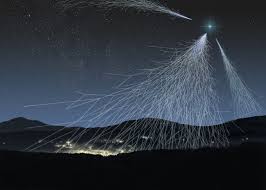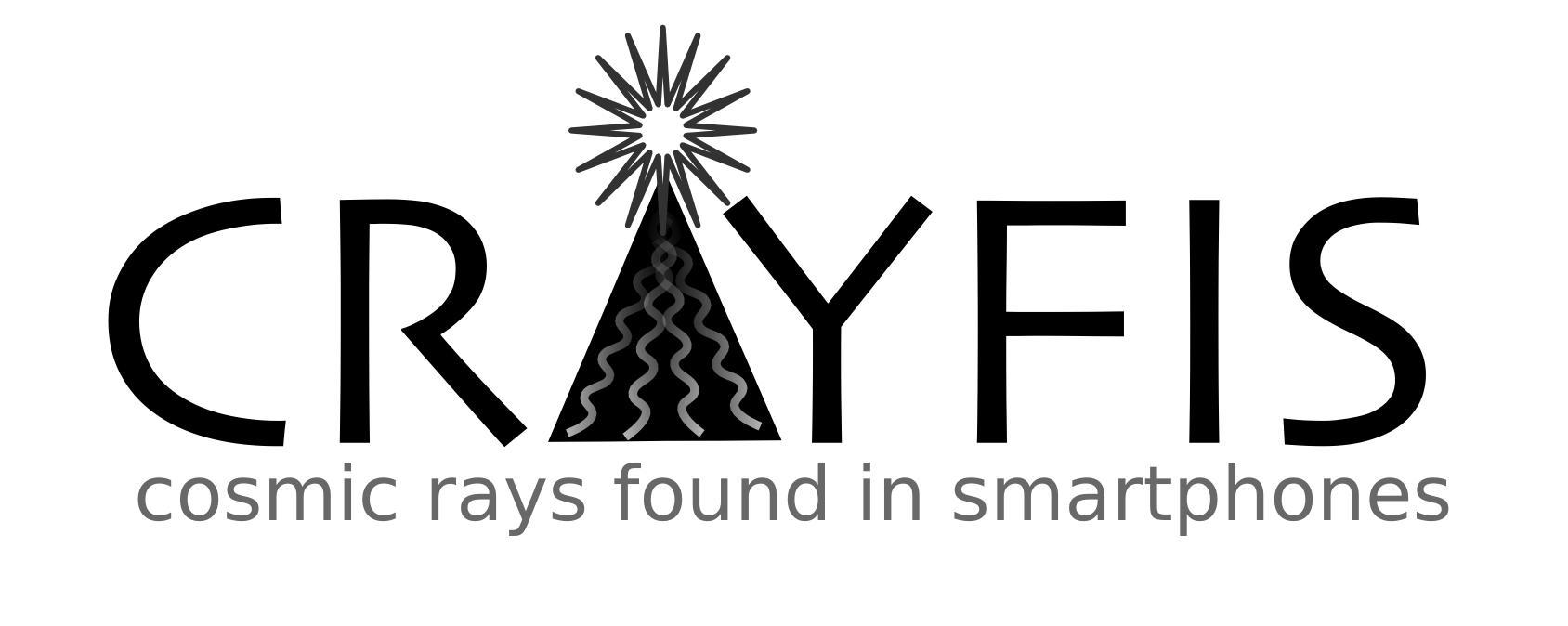Some news... I've joined the Crayfis collaboration.
A few months ago my friend Daniel Whiteson told me about his crazy idea to use the cameras in smart phones to detect ultra high energy cosmic rays. Sure, the CMOS sensor in your cell phone is basically the same as the technology we use to track charged particles in the ATLAS and CMS detectors at the LHC, but the sensor is tiny. What are the chances that a particle from a cosmic ray shower is going to hit that tiny camera?


That's an easy enough question to answer geometrically, but how do those cameras really respond to cosmic rays? And what about the myriad of other questions you would need to answer before making a case that you could actually do science this way? Well, that's exactly what Daniel Whiteson, Michael Mulhearn, Chase Shimmin, Kyle Brodie, and Dustin Burns spent the summer doing. They wrote an app to run on a cell phone and then they put a source of radiation close by to calibrate the efficiency with which these phones could detect charged particles. They also did some clever experiments with normal cosmic rays and some scintillator paddles, and they are even mooching off a muon test beam at CERN. Not knowing if the entire idea was completely unrealistic or just wildly ambitious the group ran the numbers and put out a paper. The upshot is that if we can get roughly a thousand clusters of a thousand users each, then this approach might be competitive with the big guys like The Pierre Auger Cosmic Ray Observatory detector in terms of exposure. A million users, sounds crazy -- just crazy enough to work :-)
The project, called Crayfis now has a web page http://crayfis.ps.uci.edu and is accepting beta-testers. After a wave of media attention, the project now has more than 50,000 people signed up for beta testing. You can see up-to-date altmetrics below via their api, and click on the details to see an interesting "impact map". Importantly, you will see that Japan, with its high population density, seems to like the idea quite a bit.

Since I'm on sabbatical at UCI, it was easy enough for me to see first-hand the lab tests that the group had run and some more detailed plots. I'll be honest, there are a lot of open questions. In addition to the total "exposure", the Pierre Auger observatory has excellent timing information and a fluorescence detector that allows them to watch a cosmic ray shower develop in the atmosphere and time when the particles hit the ground. In contrast, the Crayfis approach does not have the timing information for how a shower develops, which is a big loss. Similarly, there are complications from the over-burden for users running the app in their apartments. But I love the notion that this world-wide detector might be sensitive to other things as well. Imagine if multiple cosmic rays hit the Earth simultaneously... we are blind to that now as far as I know. Or maybe one ends up with a global monitoring of the muon flux that can be cross-correlated with weather and atmospheric conditions, which could be useful for all sorts of things. So for the time being, I'm joining in this quixotic quest!
In addition to thinking about the science, the two main areas I'm pitching in are thinking about how we would actually get this many users (social media, partnering with industry, etc.) and helping with the iPhone app. The current version of the app was written by Kyle Brodie -- an impressive undergraduate at UCI. Since he's busy with classes and we need to ramp up quickly, I'm taking lead the iOS development. So now I'm learning about the entirely new world of iOS development, XCode, iTunes connect, TestFlight beta testing, etc.
If you are interested, sign up to be a beta tester here.
And you might want to follow one of the social media links for the Crayfis project: